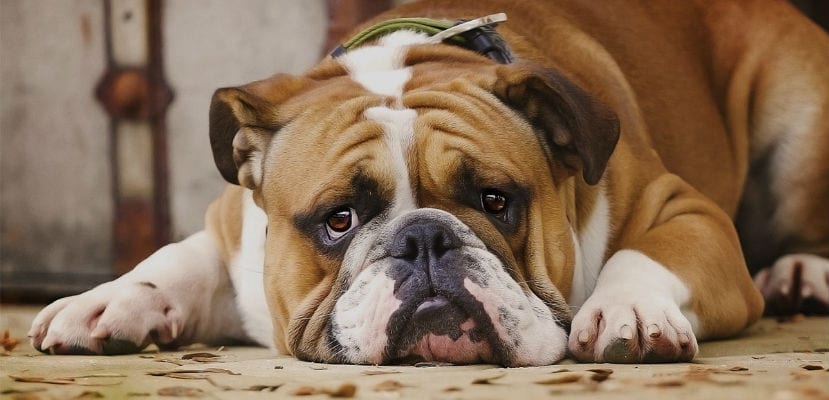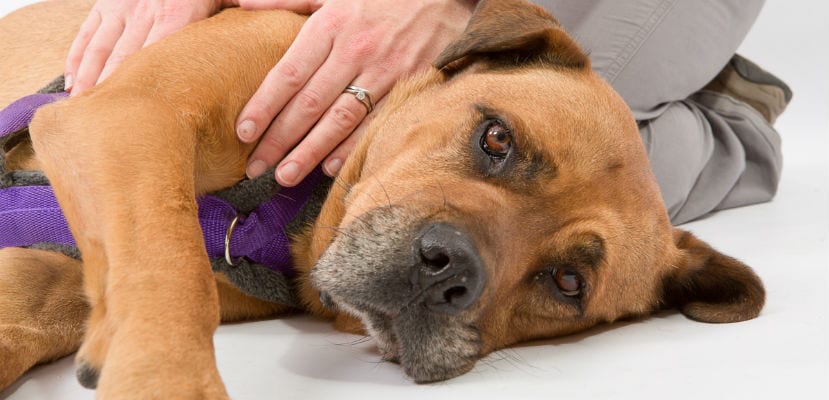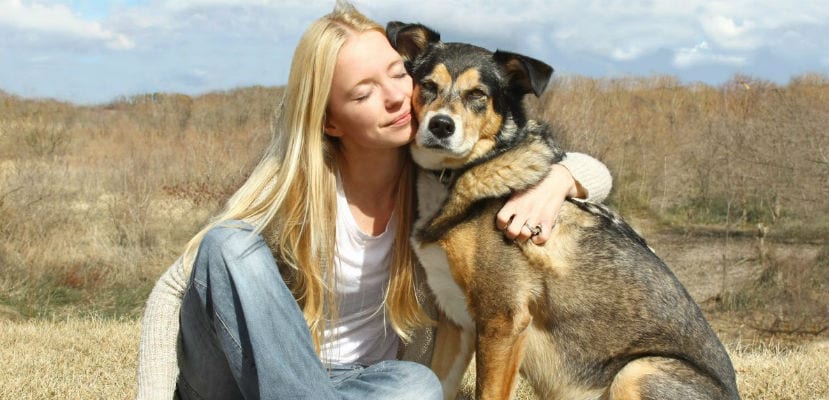
There is great confusion in the field of canine osteoarthritis, its variants, subgenres and treatments. The one that concerns us this time is the call ossifying spondyloarthrosis, a degenerative disease that affects the spine of dogs, especially those of advanced age. Here we talk about this disorder, its symptoms, possible treatments and basic care.
What is spondyloarthosis ossificans?
This disease is also called deforming spondylosis and parrot beaks, although there are actually some slight differences between them only detectable by experts in the field.
It consists of a slow degenerative process It mainly affects the intervertebral ligament. It is characterized by the appearance of bone exostoses (colloquially called "parrot beaks") in the ventral part of the vertebrae.
They usually occur between the lumbosacral or thoracolumbar regions, being the area that experiences the greatest movement when the animal performs physical activities. That is why it affects working dogs to a greater extent, although it also occurs more frequently in elderly, large breed dogs that suffer some type of instability in their joints: knee injuries, lameness, hip dysplasia, etc. .
Main symptoms
The bone exostoses that form as a consequence of this disease and produce friction in the soft tissues that surround them; that is, in the muscles and ligaments. This causes symptom as the following:
- Pain in the spine
- Pain in the abdominal region.
- Rigidity.
- Muscle spasms.
- Muscular atrophy.
- Spinal inflammation.
- Loss of sensation.
- Difficulty moving.
- Slouching.
Addition psychological effects. All these discomforts cause apathy, depression and loss of appetite in the dog, among other problems. It is also likely that he will flee from caresses, reject walks and even show aggressive behavior derived from the pain itself.

Causes
The reasons for spondyloarthrosis are similar to those of any type of osteoarthritis. The most common cause is physical overload, given in most cases by excessive exercise or obesity. Another possibility would be deformities in the spine at birth, microtrauma and cartilage alterations.
Diagnosis and treatment
Faced with any of these symptoms, the dog should be examined by a veterinarian. This one will perform radiographic studies of the spine to confirm or rule out osteophytes or bone exostoses in the area. On many occasions a neurological examination is also carried out to find out if there is any possible pathology of this type.
If the diagnosis is confirmed, the expert will administer a treatment that will depend on the state of the disease. It is important to know that spondyloarthrosis has no cure, but its symptoms can be controlled with certain drugs and some methods.
The main objective is to relieve inflammation and pain in the tissues adjacent to the spine, for which they are administered nonsteroidal anti-inflammatory drugs and, on many occasions, chondroprotectors. It is advisable to complement this treatment with a rehabilitation program. There are also those who recommend acupuncture. Of course, all this must always be supervised by a veterinarian.
Complementary treatments
Una nutrient-rich diet It is another great key to improving the life of the animal. The consumption of vitamin C is highly recommended, which favors the formation of collagen, thereby helping to reduce inflammation. On the other hand, vitamin B12 strengthens bone structure and niacinamide improves cartilage metabolism.
In addition, avoiding being overweight will help us to slow down the progression of the disease and favor the adequate mobility of the can. Similarly, many times alternative therapies such as acupuncture, hydrotherapy or massage can be very beneficial.

Basic care
From home we can also take some measures to help our dog cope with this problem. We can summarize them in:
- Avoid jumping or descending from very high surfaces. It is best if we put a small pouf, ramp or ladder near the bed and the sofa. In this way the animal can go up and down without hurting its back.
- Moderate exercise A very common mistake is to suppress all kinds of physical activity to protect the dog, but in this way we cause the opposite effect. Light walks are essential to keep your health in check, without ever straining the animal.
- Avoid stairs. Going up and down stairs forces the dog to make sudden movements in his spine, so it will be better to move him away from them. If it is impossible for us, we will have to help ourselves so that it does not strain the spine so much.
- Home massages. We can ask a canine chiropractor to tell us how to massage the dog's body to alleviate its symptoms. Thus we reinforce the effects of veterinary treatment.
- Veterinary checks. If they are always essential, when our pet suffers from a disease, veterinary examinations become more important. Likewise, we must turn to the professional with any questions or problems.